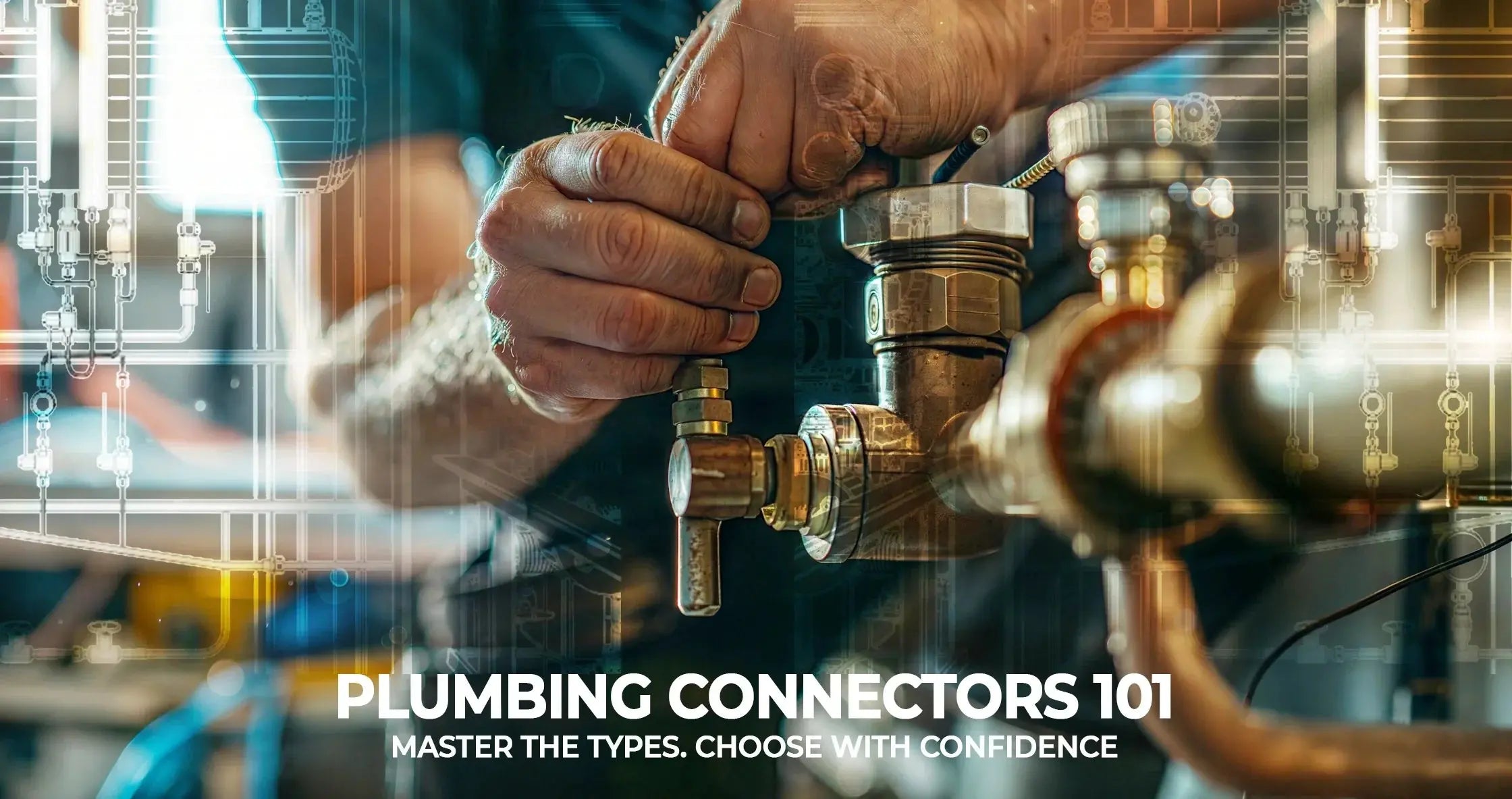Plumbing connectors may seem like small components, but they play a massive role in ensuring a reliable, leak-free plumbing system. Whether you're a novice tradesperson starting your journey or a seasoned journeyman troubleshooting a complex build, understanding the right type of plumbing connectors for specific scenarios is essential. In this guide, we'll break down the various types of plumbing connectors—including compression fittings, soldered connectors, push-fit fittings, and more—and explain when and where to use each. If you've ever searched "types of plumbing connectors" or "which plumbing fitting to use for copper pipes," this blog is for you.
Understanding Plumbing Connectors
What Are Plumbing Connectors?
Plumbing connectors are the fittings and devices used to join sections of pipe together or connect pipes to fixtures, valves, and other plumbing elements. The selection of the correct connector depends on several factors, including pipe material, application pressure, environmental exposure, and installation method. From compression fittings used in tight, indoor spaces to soldered connectors that offer permanence in copper lines, each type serves a distinct purpose.
Choosing the wrong plumbing connector can result in leaks, reduced water pressure, or even system failure. Therefore, knowing the types and their intended uses isn't just helpful—it's crucial.
Common Types of Plumbing Connectors and When to Use Them
1. Compression Fittings
Best For: Copper, plastic, and PEX pipes in low- to medium-pressure indoor environments
Compression fittings are one of the most user-friendly plumbing connectors. They work by compressing a ferrule (a ring) around the pipe when the nut is tightened. These fittings are popular in residential applications where ease of installation and disassembly is desired.
Pros:
- No heat or soldering required
- Easy to install and remove
- Great for tight or enclosed spaces
Cons:
- Can loosen over time
- Not ideal for high-pressure applications
2. Soldered (Sweat) Connectors
Best For: Copper pipes in permanent, high-pressure systems
Soldered connectors offer a durable, long-lasting bond by melting solder around a cleaned copper pipe and fitting. This method creates a permanent connection, making it a go-to for professional plumbers.
Pros:
- Strong, leak-resistant bond
- Excellent for high-pressure systems
- Visually clean finish
Cons:
- Requires heating tools and skill
- Time-consuming compared to push-fit
3. Push-Fit (Push-to-Connect) Fittings
Best For: Emergency repairs, retrofits, and quick installations involving copper, PEX, or CPVC pipes
Push-fit connectors are one of the most versatile and modern plumbing connectors available. With an internal O-ring and stainless-steel teeth, these fittings grip and seal the pipe once it's pushed into place.
Pros:
- No tools required
- Ideal for DIYers and fast repairs
- Reusable in some models
Cons:
- More expensive than other fittings
- May not meet code for certain applications
4. Threaded Connectors
Best For: Metal pipes (galvanized steel, brass) and connecting to threaded fixtures or valves
Threaded connectors use male and female threads to join two pipes. These are common in water heater installations, outdoor systems, and industrial settings.
Pros:
- Strong, durable connection
- Compatible with a variety of materials
- Ideal for accessible plumbing that may require disassembly
Cons:
- Requires Teflon tape or thread sealant
- Can corrode over time with certain materials
5. Flare Fittings
Best For: High-pressure gas and water lines, especially in HVAC and fuel systems
Flare fittings are used in high-pressure applications where a strong, leak-proof seal is essential. The pipe end is flared using a special tool and the fitting is tightened with a nut.
Pros:
- Excellent pressure resistance
- Reliable seal for critical systems
Cons:
- Requires flaring tool
- Not ideal for tight spaces
6. Barbed Fittings
Best For: Flexible tubing such as vinyl, rubber, or PEX
Barbed fittings create a seal by pushing the pipe over a ribbed or barbed surface, typically secured with a clamp or crimp ring. These are common in irrigation, low-pressure plumbing, and appliance hookups.
Pros:
- Quick to install
- Works well with flexible tubing
- Cost-effective
Cons:
- Not suitable for rigid pipes
- Can leak if not properly clamped
Choosing the Right Plumbing Connector: Key Considerations
When selecting plumbing connectors, the following factors should be carefully considered:
1. Pipe Material
Not all connectors are compatible with all pipe types. For example, compression fittings work with copper and PEX, while soldered fittings are exclusive to copper.
2. Pressure Rating
High-pressure systems demand more robust fittings like soldered or flare connectors, while low-pressure applications may be suitable for barbed or compression fittings.
3. Environment
Outdoor environments or corrosive settings call for corrosion-resistant materials like brass or stainless steel.
4. Installation Skill Level
DIY installers may prefer push-fit or compression fittings, while professional plumbers can opt for soldered or flare fittings that require specialized tools.
5. Code Compliance
Always ensure the chosen connector complies with local plumbing codes and standards, especially for drinking water or gas lines.
Troubleshooting and Maintenance Tips
- Leaks: Check for overtightening or insufficient sealant in threaded and compression fittings.
- Disconnections: Ensure push-fit and barbed fittings are pushed in completely and properly clamped.
- Corrosion: Inspect metal fittings periodically, especially those exposed to moisture.
- Compatibility: Avoid mixing metals (e.g., copper and galvanized steel) without dielectric unions to prevent galvanic corrosion.
Final Thoughts
Selecting the right plumbing connectors can significantly impact the safety, durability, and efficiency of any plumbing system. From DIY repairs to full-system installations, knowing when to use compression, push-fit, threaded, or soldered connectors can save time, money, and future headaches. Keep this guide handy the next time you visit the job site or plan a home improvement project.
For top-quality fittings and connector supplies, explore our Pipe Fittings Collection and other plumbing essentials at Industrial Electrical Warehouse.
Explore Related Product Collections:


